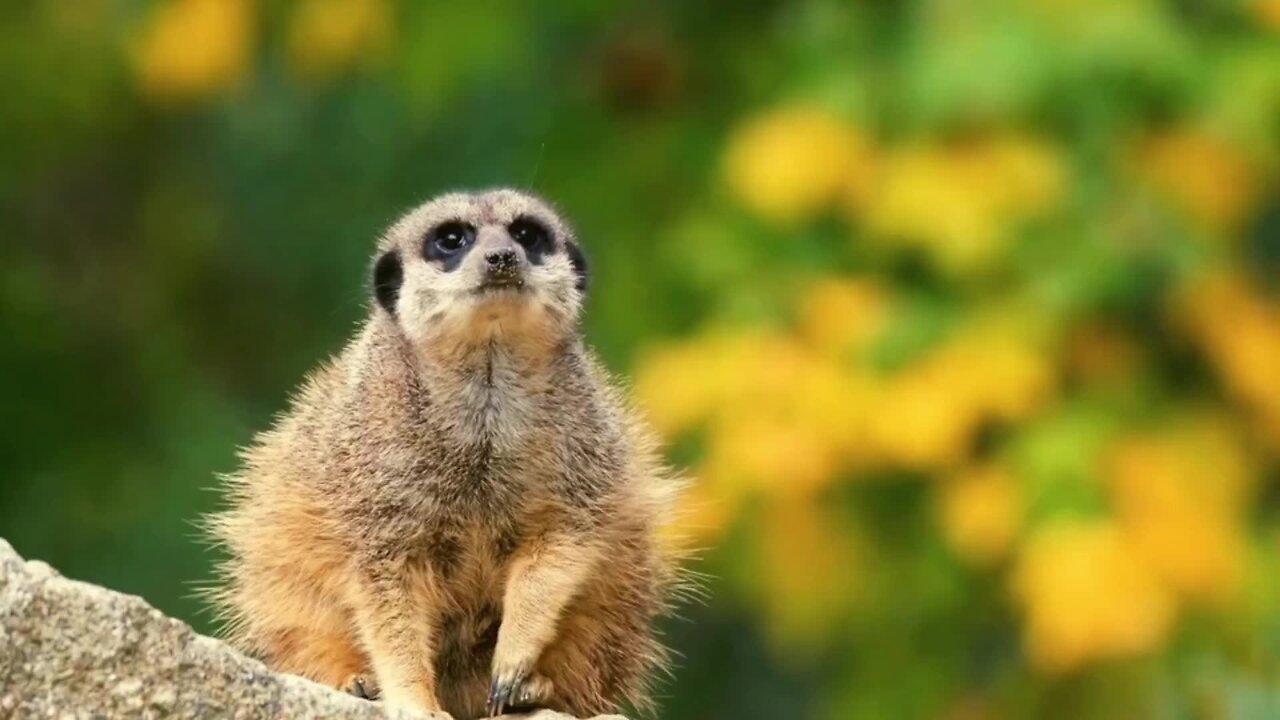"Life in the Clan: The Social World of Meerkats"

"Life in the Clan: The Social World of Meerkats"
The meerkat (*Suricata suricatta*) is a small mammal native to the deserts and grasslands of southern Africa, particularly in Botswana, Namibia, South Africa, and southwestern Angola.
Known for its sociable behavior and upright posture, the meerkat is a member of the mongoose family.
### Physical Characteristics - **Size:** Meerkats are relatively small, typically weighing between 0.5 to 1 kilogram (1.1 to 2.2 pounds) and measuring about 25 to 35 centimeters (10 to 14 inches) in length, with an additional 17 to 25 centimeters (6.7 to 9.8 inches) for the tail.
- **Appearance:** They have slender bodies, short legs, and a pointed snout.
Their fur is usually a grizzled gray or tan with darker bands across their back.
The face is marked with dark eye patches, which help reduce the glare of the sun, and they have a black-tipped tail.
### Behavior and Social Structure - **Social Life:** Meerkats are highly social animals, living in large groups known as "mobs" or "clans," which can consist of 20 to 50 individuals.
These groups are often made up of extended family members.
- **Communication:** They have a complex system of vocalizations used to communicate with each other, including different calls for various types of predators.
- **Foraging:** Meerkats are omnivores, feeding on insects, small mammals, birds, eggs, and even plants.
They forage in groups, with some individuals acting as sentinels, standing on their hind legs to keep watch for predators such as eagles, hawks, and snakes.
- **Burrowing:** Meerkats are excellent diggers, using their long, curved claws to create extensive underground burrow systems. These burrows provide shelter from the harsh desert climate and protection from predators.
### Reproduction - **Breeding:** Typically, only the dominant pair in a meerkat mob will breed, while the other members help in raising the young.
A female meerkat can give birth to 1 to 4 pups after a gestation period of about 11 weeks.
- **Care for the Young:** Pups are born blind and helpless but develop rapidly, emerging from the burrow at around three weeks of age.
The entire mob participates in caring for the pups, teaching them how to forage and avoid predators.
### Adaptations - **Survival in Harsh Conditions:** Meerkats are well-adapted to their arid environment.
They can close their ears to keep out dirt while digging, and their dark eye patches help reduce the sun's glare.
- **Thermoregulation:** Their burrows help them avoid extreme heat during the day and cold temperatures at night.
### Conservation Status - **Threats:** While meerkats are not currently considered endangered, their populations can be affected by habitat loss and predation.
However, they are adaptable and can live in areas where humans are present.
### Cultural Significance Meerkats have gained popularity in popular culture, especially due to their portrayal in documentaries and films. Their curious and playful behavior, along with their unique social structure, makes them a favorite subject for wildlife enthusiasts.



![WATCH: Syrians Celebrate Reported Death of Hezbollah Head Hassan Nasrallah [Video]](https://video.newsserve.net/300/v/20240928/1388748670-WATCH-Syrians-Celebrate-Reported-Death-of-Hezbollah-Head.jpg)
![Rizza Islam Joins Jesse! (#375) [Video]](https://video.newsserve.net/300/v/20240927/1727463509-Rizza-Islam-Joins-Jesse!-375.jpg)
![Rivals Series [Video]](https://video.newsserve.net/300/v/20240925/1388538374-Rivals-Series.jpg)